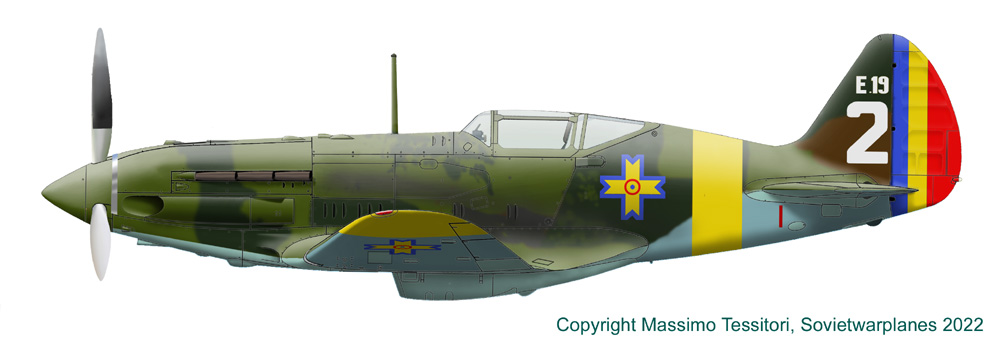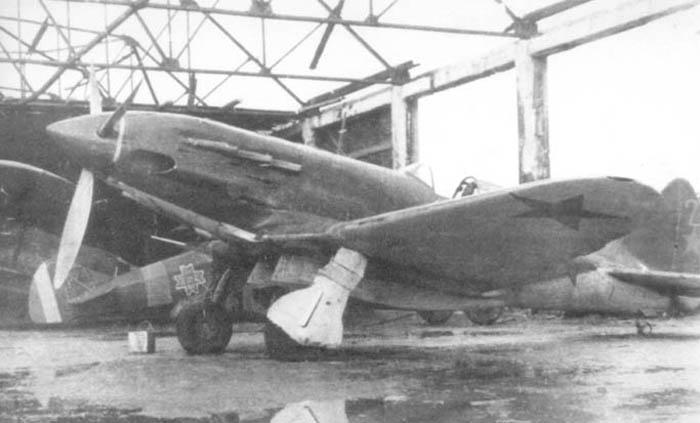
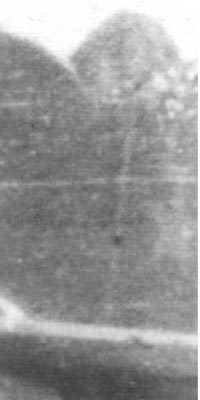
Left:
photo of the plane still in Soviet markings, probably at the airport of Melitopol.
The photo is from the book Migy Stalina and was restored by me in 2005 on the base of what seemed visible on the detail shown below: a star and a number 2 over it.
Other versions of this photos were published, some not showing the rudder at all, some showing the star and not the number.
Nearly twenty years later, after the publication of the works of Mr. Timin, we know that these markings were not typical of 25 IAP in 1941: other planes of this unit after August 1941 show white three digit numbers on the fuselage, and a red cap with white outline on the tail; no stars or numbers on the rudder.
Here is a link to a page with the typical look of MiG-3s of 25 IAP in late 1941 and early 1942.
I can suspect that the star and what seems a number 2 were added by someone in Rumania, perhaps directly on the photo, to hide the identity of the Ukrainian defector.


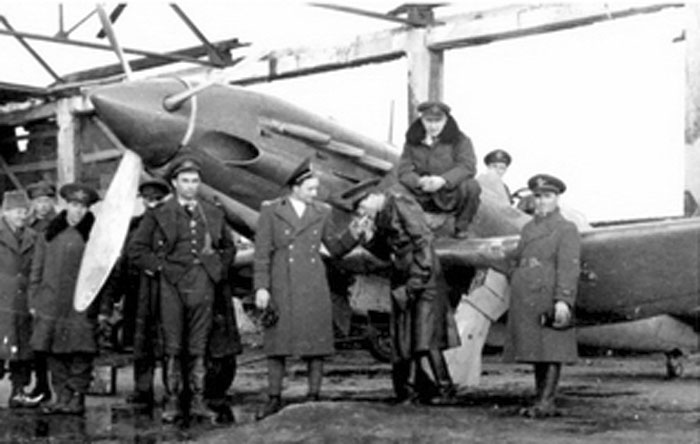
A lot of photos of the same plane shot in the same hangar are known; none of these show the rudder, nor the part of the fuselage where the three-digit number is expected to be. This seem consistent with the will to hide the identity of Lt. Sharkun.
With the words of Mr. Timin:
'Despite the many photographs taken by the Romanians during the three months of their stay in Melitopol, it was not possible to determine the ownership of the MiG for a long time. After the pilot was identified with the help of the famous Romanian aviation historian Dan Antonio, the rest was a matter of technology.'
https://warspot.ru/7881-dva-miga-dve-sudby
We can only see that it was a typical MiG-3 of the first half of 1941, apart for few updates:
Its characteristics look to be:
- early type MiG-3, without slats;
- with radio and related wiring;
- painted green with light blue undersurfaces (both colors on the metal parts appear lighter than on the wooden ones);
- light blue pitot probe with silver end;
- black outlined red stars on fuselage and wings upper and under surfaces;
- silver propeller blades with partially black painted rear surface (as standard); the black paint was worn; traces of some worn paint were visible on the front too;
- a metallic stripe (oil reflector) covered the spinner-cowling junction;
- there were metal sheet triangles near the oil coolers outlet flaps, that was a later addition to match late type MiG-3s;
- successive photos show some auxiliary slots on the fuselage sides, unclear if made by soviets or by Rumanians.
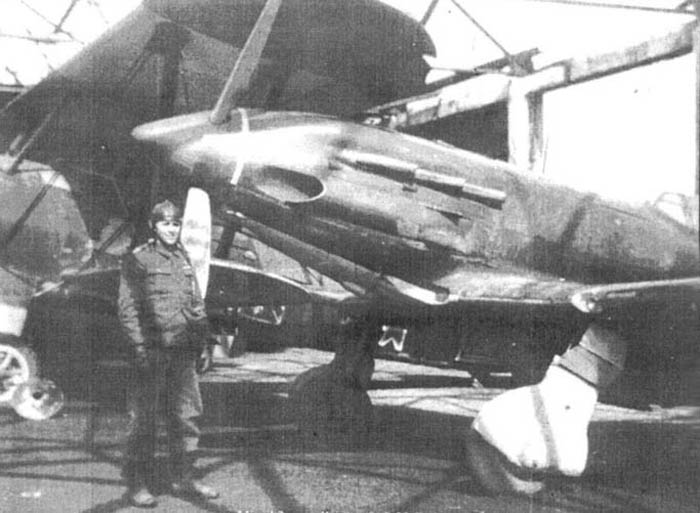
Photo from Aeromagazin Romania, 2002
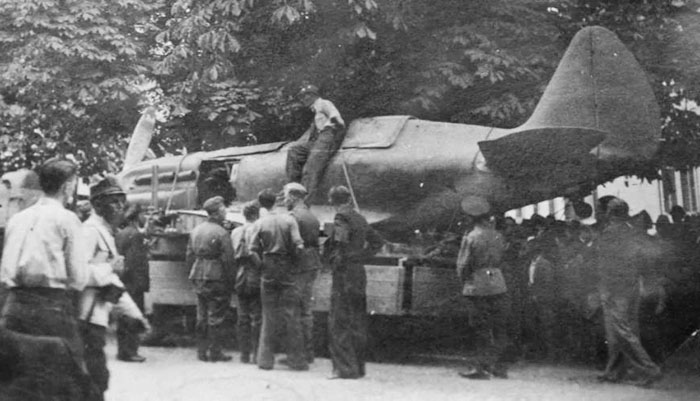
Another image of the MiG-3 shown in public. The red star on the fuselage was still there, but no other marks are visible, that would be very strange for a plane of 25 IAP. On the fuselage, just under the sliding hood, one can see vague traces of a repainting just where the three digit number is expected to have been. This seems confirming the will to hide the identity of the defector.
Image via A. Ruchkovsky
At this point, any reconstruction of the number of this plane would be a mere guess.
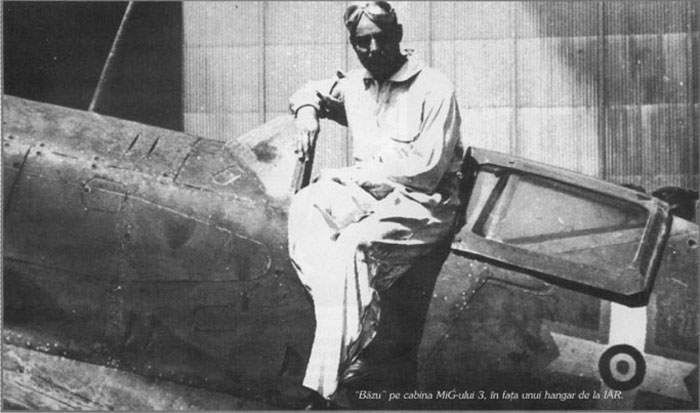
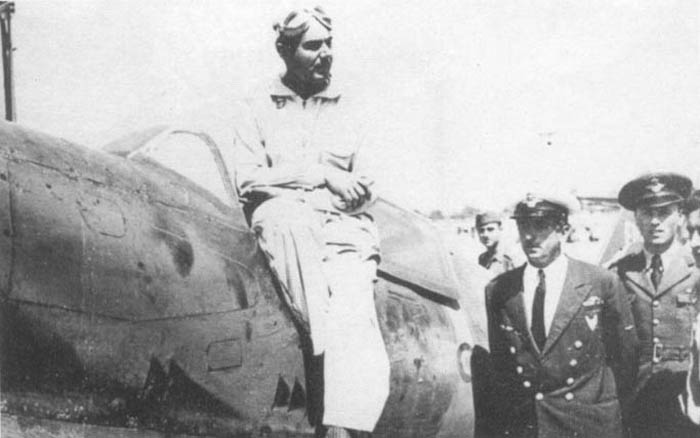
This captured aircraft was repainted in Rumanian markings and flown at Brasov by ARR's top ace Cpt 'Bazu' Cantacuzino, and used as an "aggressor" for training purposes. It looks to have been left with uniform Russian green color for some time.
the white E.19 on the vertical stabilizer referred to Escadrila 19 observatie (19th Spotting Squadron) based at Melitopol during 1941. Below it there is a large white "2". On the rudder there were the 3 colors of the Romanian flag. It had the Micheal's cross followed by the yellow line between the cockpit and the tail.
Soviet troops seized this aircraft from the Rumanians during September of 1944, after the Rumania has broken its alliance with Germany and established a new one with the Soviet Union.
Left:
Capt. Cantacuzino on the MiG-3. Note the patchy look of the plane.
The radio mast was there, but wires aren't visible despite the sharpness of the photo. No radio equipment appears under the rear glazing.
Photos from Aeromagazin Romania, various issues 2002
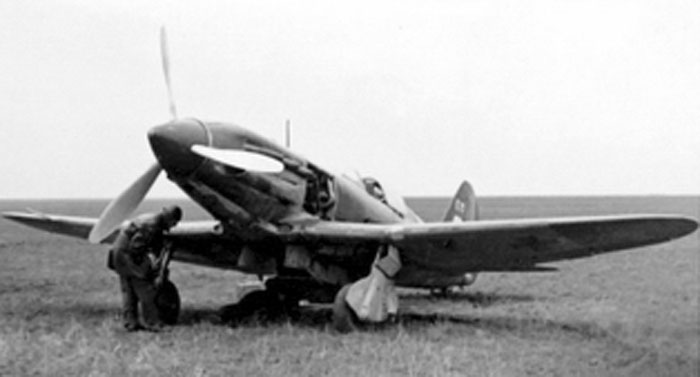

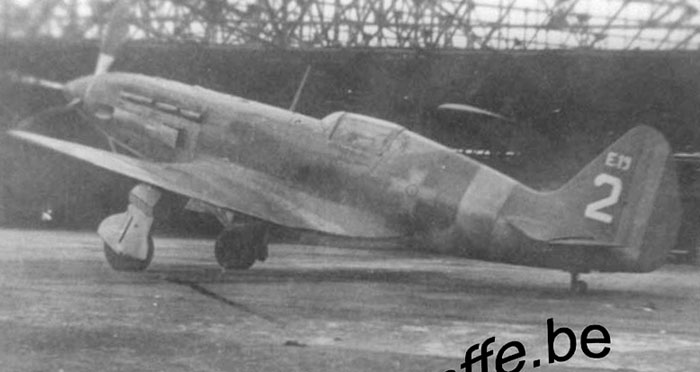
Photo of www.luftwaffe.be
It is hard to fully understand how this plane was painted. Certainly, it preserved the original green/blue finish on a wide part of its surfaces, including the propeller. Certainly, the areas on the fuselage and on the tail were repainted with Rumanian colors to delete the original Soviet markings. Certainly, Rumanian markings, numbers and yellow areas on the fuselage and on the wingtips were added, both above and below.
It is still debatable if the repaintings were made with Rumanian dark green only, or involved areas painted with Rumanian dark brown. Besides, it is debatable if the repaintings were extended only to areas where strictly necessary, or were to extended to give the idea of a new camouflage.
Looking at the photos aside, we see that the fin has a dark top and leading edge, while the area around the number 2 is lighter, but it is still darker than the area in front of the fin fillet; this is consistently visible on three photos; this points on the use of three shades, of which one (probably the lighter one) was the original Soviet AII green, and the other ones were likely the typical paints of the Rumanian camouflage.
The photo below shows the plane after a belly landing; it shows the yellow wingtips, the Rumanian crosses and some non uniform areas that are consistent with the possibility of a wide repainting with darker colors.
Unfortunately, the pattern is only vaguely recognizable on limited areas, so a lot of guesswork is necessary.
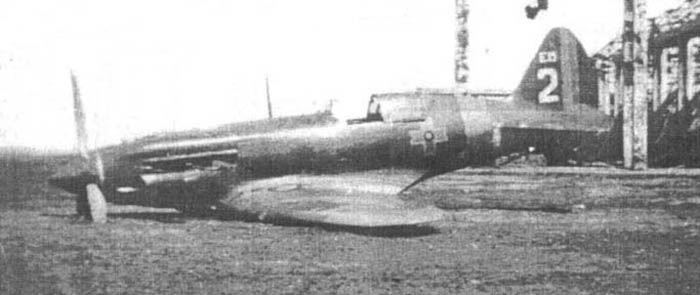
Photos from Aeromagazin Romania, various issues 2002
Below: an attempt to reconstruct the possible look of the plane on the base of what written above. Its characteristics look to be:
- early type MiG-3, without slats;
- radio mast, but radio wires an their attachment on the tail don't appear on the photos;
- light blue pitot probe with silver end as standard;
- silver propeller blades with partially black painted rear surface (as standard); the black paint was worn; traces of some worn paint were visible on the front too;
- a metallic stripe (oil reflector) covered the spinner-cowling junction;
- there were metal sheet triangles near the oil coolers outlet flaps, that was a later addition to match late type MiG-3s;
- some additional non-standard auxiliary slots on the fuselage sides, unclear if made by Soviets or by Rumanians;
- the base livery was the prewar style Soviet one, AII green with light blue undersurfaces (both colors on the metal parts appear lighter than on the wooden ones); the green surfaces were partially repainted with Rumanian dark green and perhaps dark brown;
- the white E.19 on the vertical stabilizer referred to Escadrila 19 observatie (19th Spotting Squadron) based at Melitopol during 1941;
- below it there is a large white "2";
- on the rudder there were the 3 colors of the Romanian flag;
- Micheal's crosses, followed by a yellow recognition band between the cockpit and the tail;
- Michael's crosses on the wings in four positions;
- the wingtips were yellow for recognition, both above and below.
